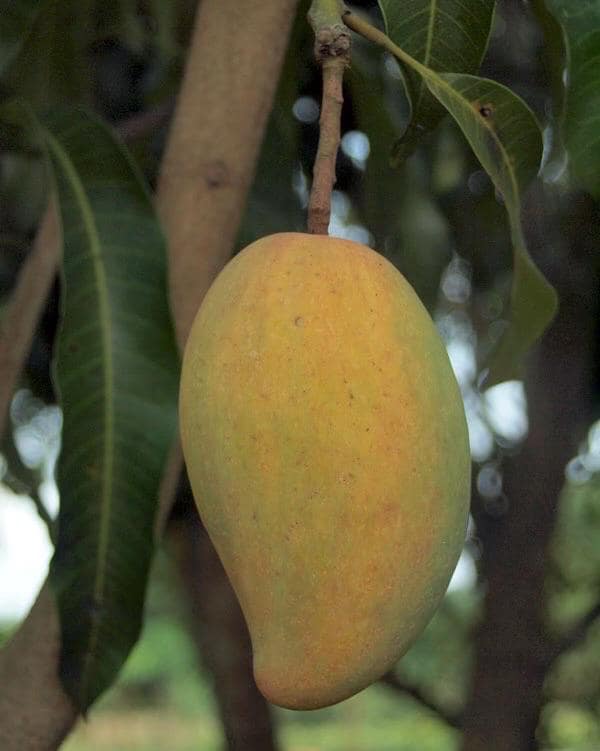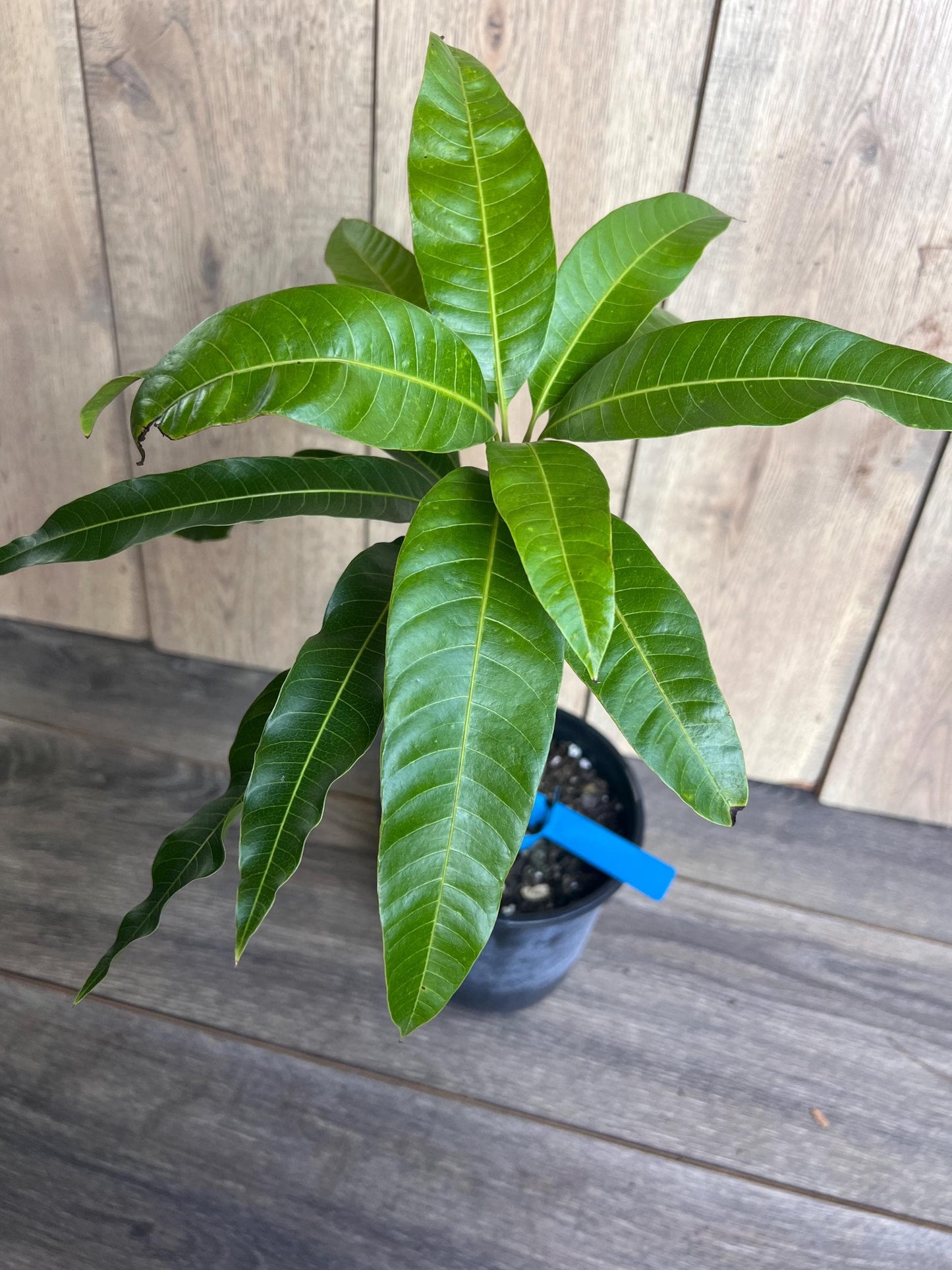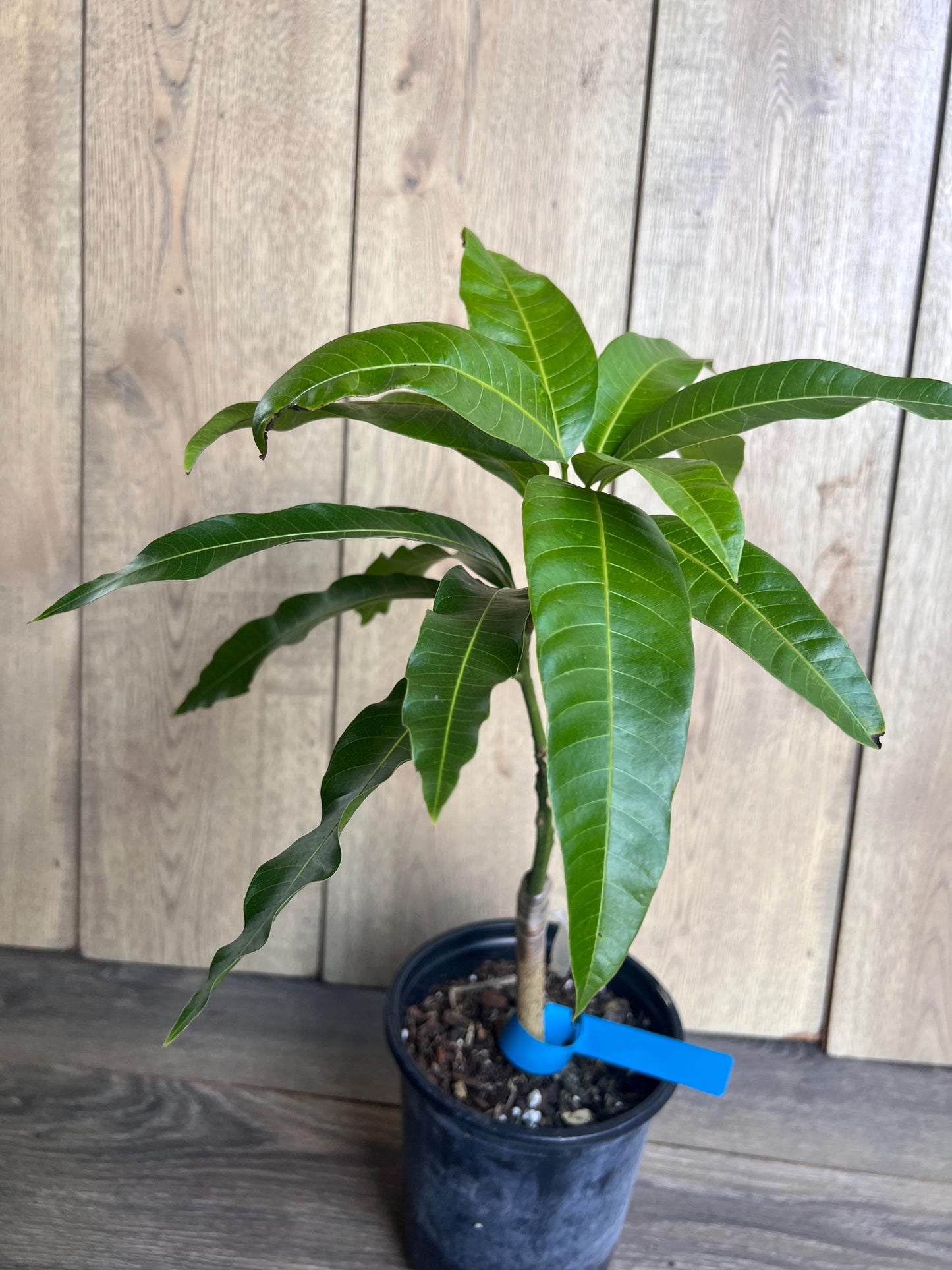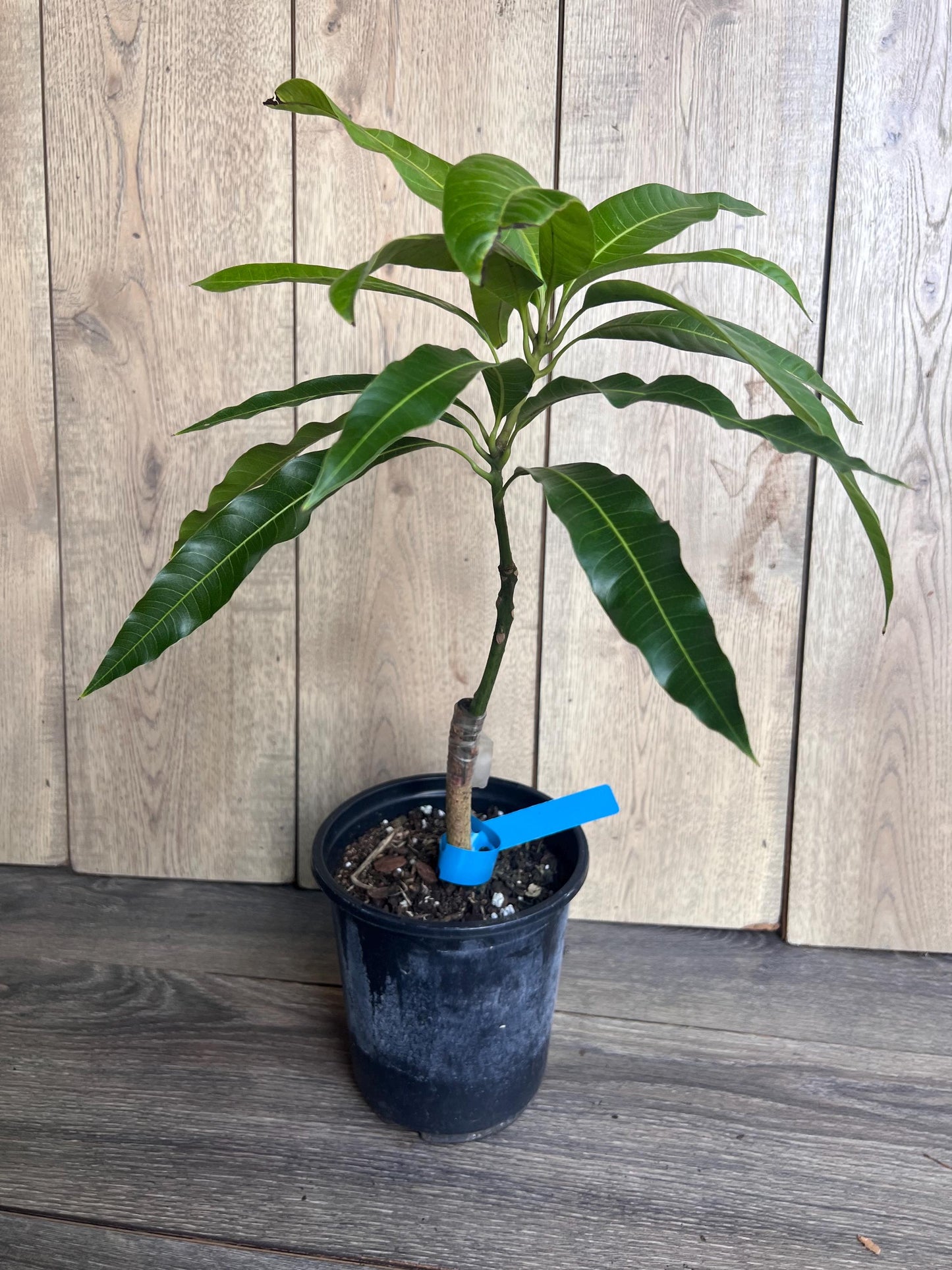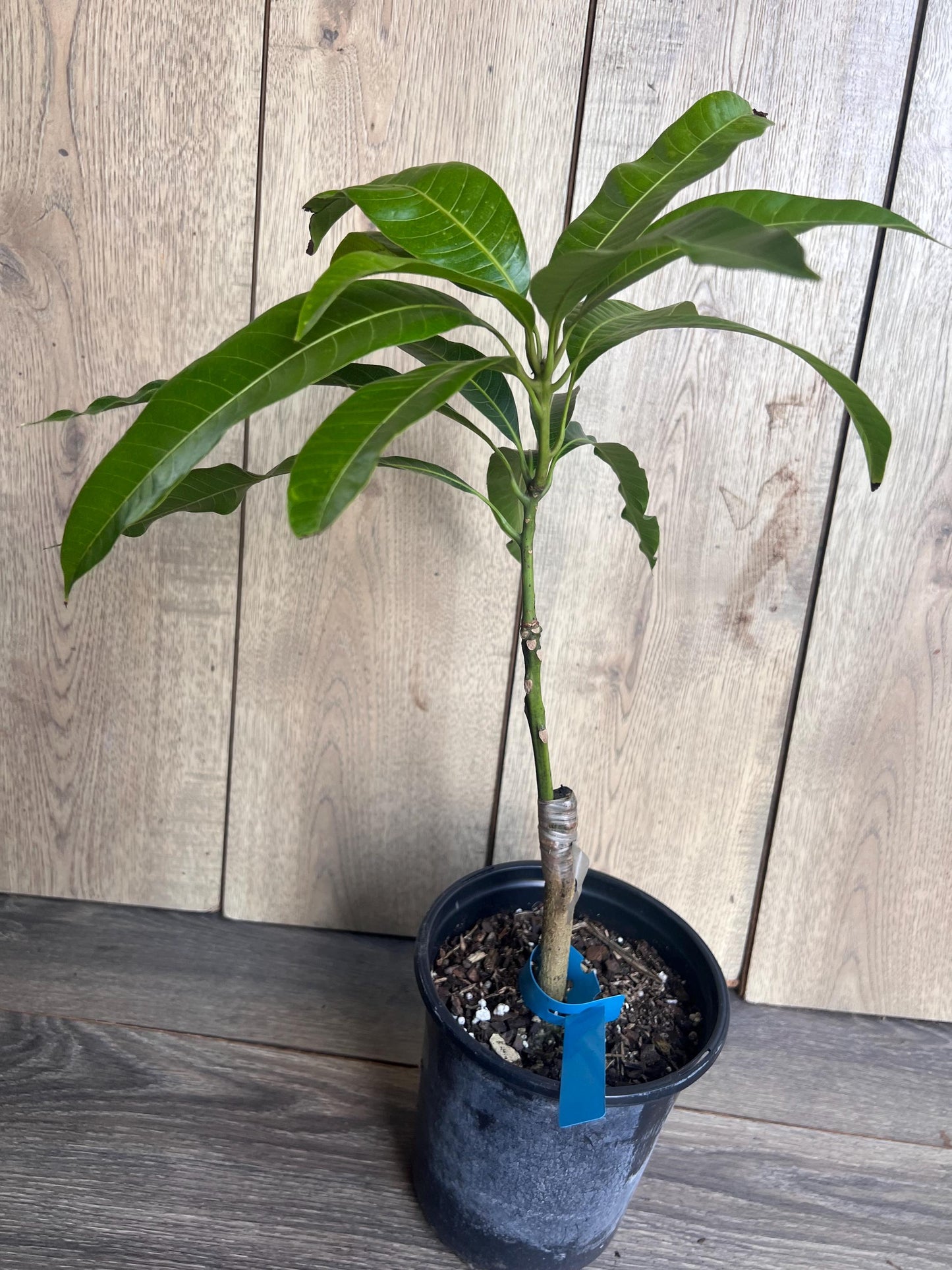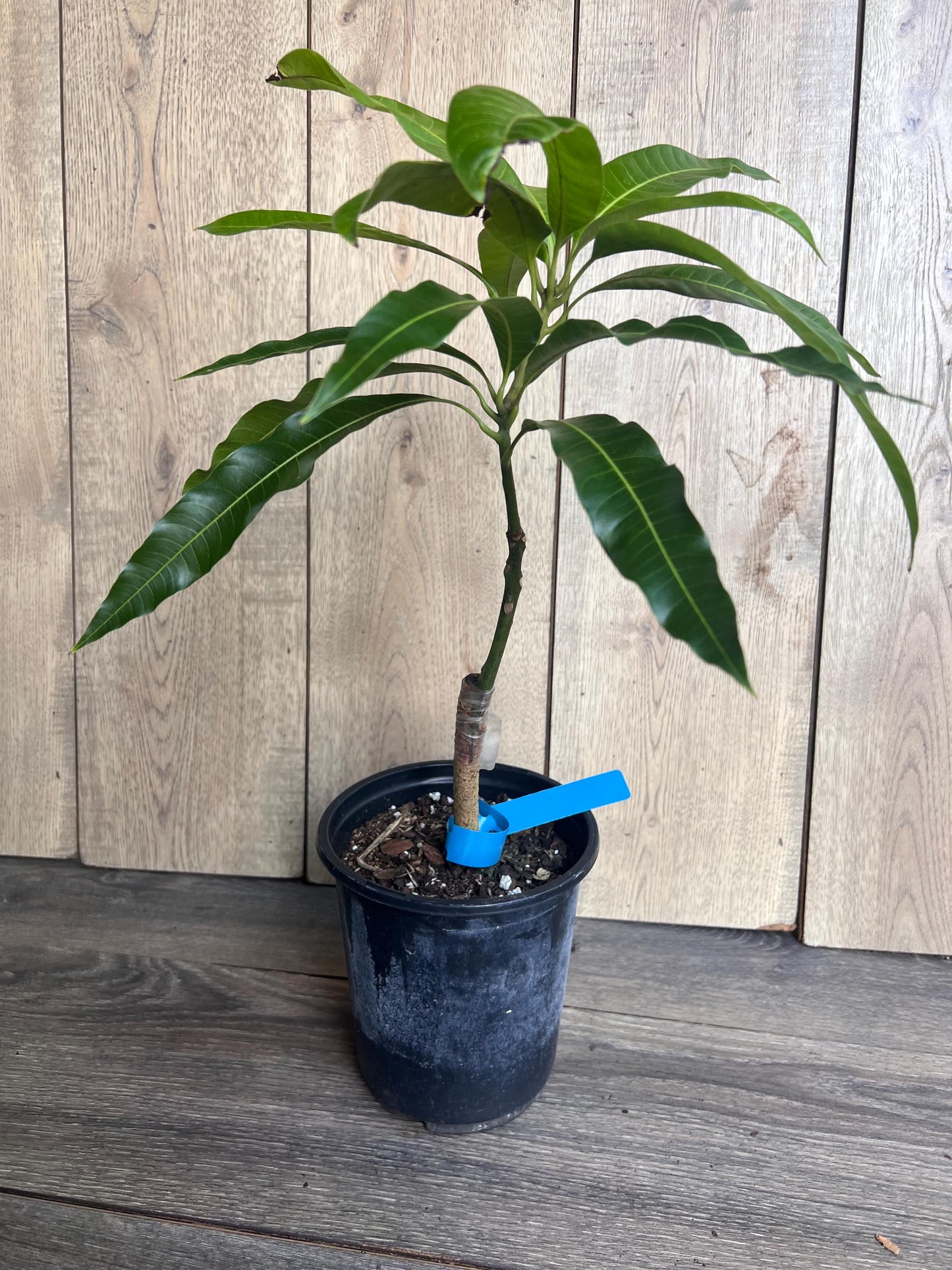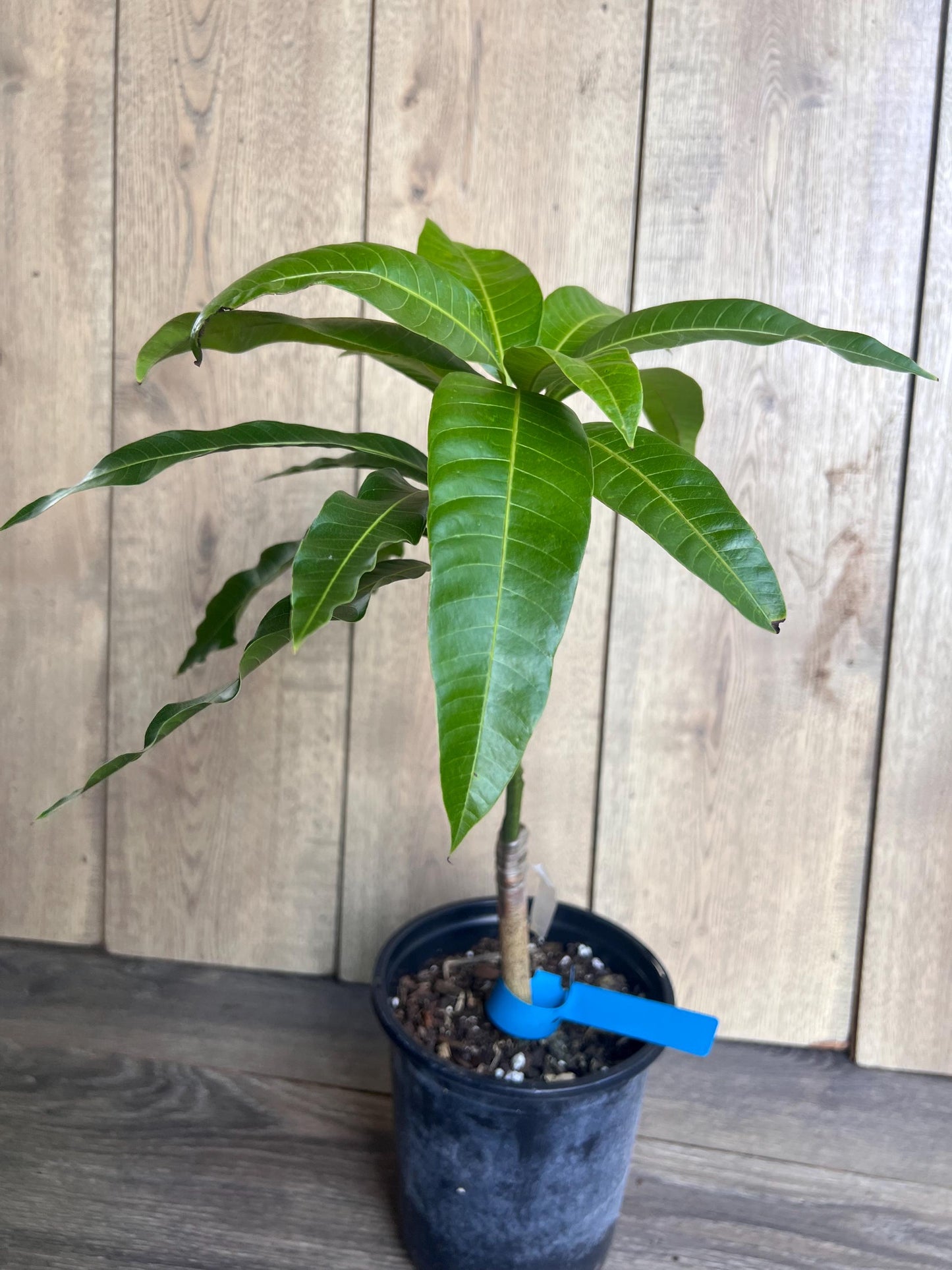Grafted Manila Mango in 1/2 Gallon Pot
Grafted Manila Mango in 1/2 Gallon Pot
Couldn't load pickup availability
Note: You will receive Manila Mango in 1/2 gallon pot similar to the pictures
The Manila Mango (Mangifera indica), also known as the Philippine Mango or Carabao Mango, is a highly prized variety of mango renowned for its exceptionally sweet and smooth, creamy flesh. This tropical fruit is characterized by its slender, oval shape, with yellow-orange skin that ripens to a rich golden hue when fully mature. Manila Mangoes are fibrous-free, offering a velvety texture and a mild, buttery flavor that is less tangy than other mango varieties. Known for being one of the world's best-tasting mangoes, they are frequently enjoyed fresh, in smoothies, or incorporated into desserts. The tree itself is dwarf or semi-dwarf, making it suitable for home gardens, and it thrives in tropical and subtropical climates with plenty of sunlight and well-draining soil
1. Location and Sunlight
- Full Sun: Manila mango trees need at least 8 hours of direct sunlight a day to thrive and produce fruit. Choose a spot with plenty of sunlight for the best growth.
- Space: These trees can grow quite large, so ensure there's enough space for the tree to spread its canopy. Ideally, plant it at least 15–20 feet away from other trees or structures.
2. Soil Requirements
- Well-drained Soil: Manila mangoes prefer sandy loam or well-draining soil. Avoid heavy, clayey soils that retain too much water, as this can lead to root rot.
- pH Level: Mango trees like slightly acidic to neutral soil (pH between 5.5 and 7.5).
3. Watering
- Young Trees: Water young trees regularly to help them establish their root system. Keep the soil consistently moist but not waterlogged.
- Established Trees: Once mature, the tree is somewhat drought-tolerant. Water the tree deeply during dry periods, especially when it is flowering or fruiting. Ensure the soil drains well to avoid root rot.
- Watering Tips: Water the tree early in the day to reduce the risk of fungal diseases, and water at the base of the tree rather than over the leaves to prevent mold growth.
4. Fertilizing
- Young Trees: Fertilize with a balanced fertilizer (e.g., 10-10-10) every 3-4 months during the growing season.
- Mature Trees: Once the tree is established, fertilize with a higher potassium fertilizer (such as 8-3-9 or a specific fruit tree fertilizer) to promote fruiting. Apply it once a year, preferably in the spring or early summer.
- Organic Matter: Adding compost or organic mulch around the base of the tree can also improve soil fertility and moisture retention.
5. Pruning
- Shape and Size: Prune the tree regularly to maintain a manageable size and to remove dead or diseased wood. Pruning also helps to improve air circulation and sunlight penetration.
- After Fruit Harvesting: Prune after the mangoes have been harvested, typically in late summer or early fall, to prepare for the next growing season.
6. Pest and Disease Management
- Common Pests: Manila mangoes can be susceptible to various pests, including aphids, mealybugs, and mango weevils. Regularly inspect the tree and treat with an organic insecticide or neem oil if needed.
- Diseases: Mango trees are prone to fungal diseases like anthracnose, which affects the fruit and leaves. To prevent this, avoid overhead watering, maintain good airflow around the tree, and apply fungicides if necessary.
- Mango Tree Care During Wet Seasons: During rainy periods, mango trees can be more vulnerable to root rot and fungal infections. Ensure proper drainage and avoid standing water near the base of the tree.
7. Pollination and Fruit Production
- Pollination: While mango trees are generally self-pollinating, having multiple trees nearby can improve fruit set. Pollinators like bees and butterflies also help with fertilization.
- Flowering and Fruiting: Mango trees typically flower in late winter or early spring, and fruit will develop over the summer. Ensure the tree has proper nutrients, sunlight, and water to support fruit production.
8. Harvesting
- Timing: Mangoes generally take about 4-5 months from flowering to ripen. Harvest the fruit when it's still green but fully grown in size, as it will ripen off the tree.
- Ripening: After harvesting, mangoes will ripen naturally at room temperature. Once ripe, they will feel soft to the touch and have a sweet aroma.
9. Temperature Considerations
- Manila mangoes thrive in tropical and subtropical climates. They prefer temperatures between 77°F to 95°F (25°C to 35°C).
- In colder climates, the tree may not survive frost, so consider growing it in a pot that can be brought indoors during winter or use frost protection methods if necessary.
By following these care guidelines, you can enjoy healthy, fruit-bearing Manila mango trees that produce some of the most delicious mangoes in the world
Share
